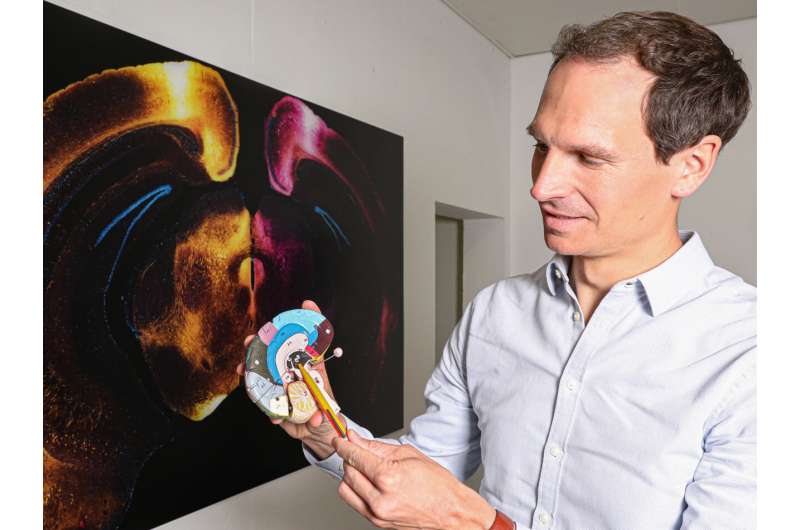
How the brain deals with trauma is complex, and humans get over trauma differently depending on whether it happened long ago or if it was recent. But what scientific evidence do we have about the way the brain deals with short-term versus long-term traumatic memories?
EPFL scientists have identified the specific regions in the brains of mice responsible for reprograming traumatic experiences towards safety, and the brain regions are indeed different and depend on whether the trauma happened recently or a long time ago. They found that they could facilitate the extinction of long-lasting traumatic memories by enhancing the activity of a primitive region of the brain called the nucleus reuniens. The results are published today in Nature Neuroscience.
“Traumatic memories are so emotionally charged that they are difficult to ‘erase’ or extinguish. Despite this fact, surprisingly little is known about these long-term traumatic memories,” explains EPFL’s Nestlé Chair Johannes Gräff, principal investigator of the study. “In our study, it’s the first time someone has researched fear extinction at the brain circuit level for long-lasting traumatic memories.”
In 2018, Gräff and his team identified the cells in the brain responsible for reprogramming long-term trauma towards safety, also in mice. The same cell that was activated during a traumatizing experience was also activated after therapy, indicating that the traumatized cell itself was reprogrammed towards safety, giving insight into how the brain deals with trauma at the cellular level.
But Gräff and his team wanted understand how traumatized brain cells were reprogrammed towards safety and if other regions of the brain facilitated this reprogramming. What they found was that the canonical extinction pathway for recent memories is not involved for the extinction of so-called remote or long-term traumatic memories.
The nucleus reuniens facilitates recovery
In the experiment, the mice underwent “Pavlovian fear conditioning,” in which they received an electric shock from the ground. A traumatized mouse expresses its fear by freezing, but after the therapy, the mouse regains confidence and normal mobility. One group of mice received therapy 1 day after the trauma, while another group received therapy 30 days later.
The scientists determined which brain circuits were active in both groups of mice. They found that a direct cortico-amygdalar pathway was active 1 day following the trauma, but after 30 days, an indirect pathway was active, one that was rooted in the nucleus reuniens.
“Interestingly, the activity in the reuniens peaked shortly before the mouse ceased to express fear. It’s as if the activity in the reuniens anticipates the end of freezing,” continues Gräff. “When we manipulated the activity of the reuniens, time-locked to these peaks, we saw that it was indeed important for regulating fear. So when we boosted the activity, the mice froze less. When we inhibited it, the mice froze more.”
“That anticipation of when freezing ends is actually probably the most enlightening finding of our research from a purely technical perspective.”
The results provide insight at the brain-circuit level as to why traumatic memories are persistent and harder to extinguish. They shed light on the brain mechanisms involved for recovering from long-term traumatic memories.
Source: Read Full Article